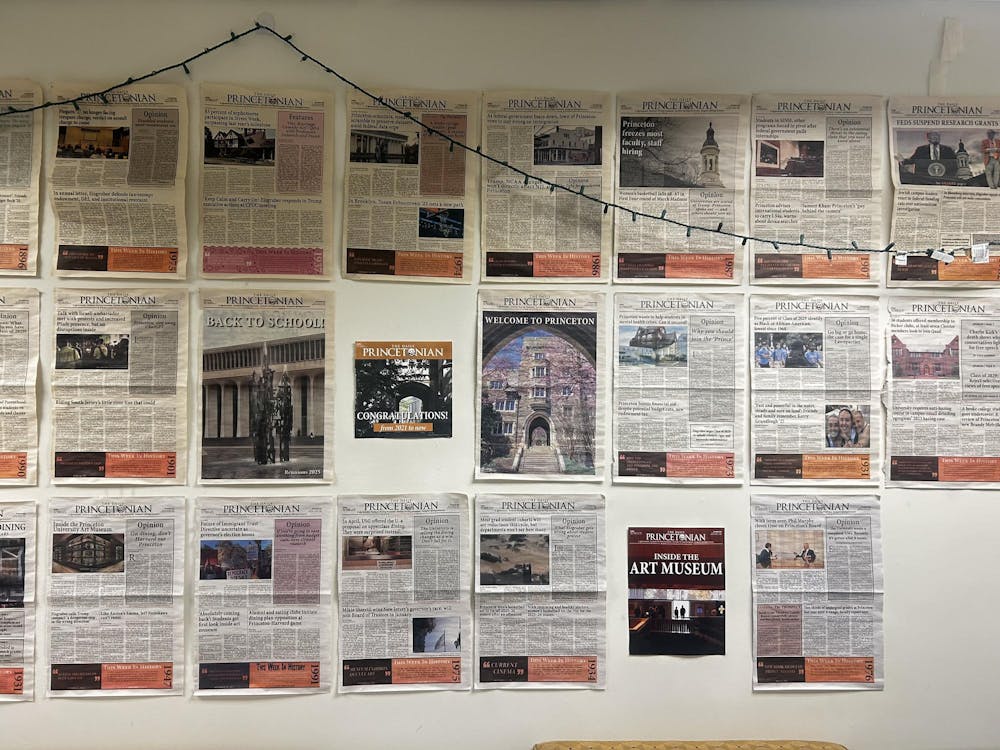In the midst of the semester, balancing multiple heavy workloads is difficult for students; however, the challenges of maintaining this balance begin earlier than the first day of class. Specifically, choosing the correct combination of classes is often an unduly difficult task due to class scheduling conflicts. Undergraduate courses are not scheduled evenly throughout the day; rather, a majority of classes begin during the 11 a.m. or 1:30 p.m. scheduling blocks. To increase the range of classes students can accommodate in their schedules, the Editorial Board recommends redistributing a portion of the undergraduate courses to other, less-trafficked scheduling blocks throughout the day.
According to the course listing provided by the Office of the Registrar, a plurality of all undergraduate courses for the fall semester of the 2015-16 academic year begin at either 11 a.m. or 1:30 p.m. This grouping excludes 500-level courses designed for graduate students but, even after accounting for classes ultimately canceled, these time-slots encompass over 500 courses. Whenever a student enrolls in any class scheduled at any time, that choice excludes other courses scheduled during the same period; however, this effect is magnified during the crowded midday scheduling blocks. These blocks together contain over 50 percent of the classes offered in a week, and enrolling in one course during these times prevents students from enrolling in the more than 100 classes scheduled at that same day and time.
The preference for scheduling midday times is understandable. Courses scheduled for 11 a.m. and 1:30 p.m. occur late enough in the day so that students are awake; therefore, students are more likely to attend. But this strategy can make taking some courses very difficult, especially when different departments vie for the same lecture and classroom space during high demand times. This effect is magnified for students in certain departments. For example, scheduling of economics courses is especially problematic.
Despite the abundance of problems associated with the 11 a.m and 1:30 p.m. scheduling blocks, the course offerings listed by the Office of the Registrar indicate that the 10 a.m. and 3 p.m. blocks are underused. About 10 percent of undergraduate courses are scheduled for 10 a.m. and less than a quarter are in session at 3 p.m. Departments could use these times, which are neither unreasonably early nor unreasonably late, to offer courses currently offered during the course-dense 11 a.m. and 1:30 p.m. blocks. In fact, this change has already been implemented by the coordinators of the Humanities Sequence; after years of being scheduled at 11 a.m.,the course now meets at 10 a.m.
Students explore the different offerings in the curriculum to fulfill distribution requirements or to engage in a new field; therefore, it will not be necessary to reschedule higher-level courses offered for students within specific concentrations. While the 1:30 p.m. block is convenient for accommodating three-hour seminars, a plurality of classes beginning at 1:30 p.m. during the 2015 fall semester are 80 minutes or less. Reallocating some non-seminar introductory courses to the 10 a.m. and 3 p.m blocks would offer students more choice in course selection without interfering with seminars.
The Board recognizes that the Office of the Registrar already accomplishes an impressive logistical feat in organizing the undergraduate course schedule each semester. The process of allocating classroom space to hundreds of professors dispersed across numerous departments is distinctly challenging. However, implementing the Board’s policy recommendation to ease overcrowding of courses in midday scheduling blocks would render the valuable service of the Registrar’s Office all the more impactful.
Jeffrey Leibenhaut '16 abstained from the writing of this editorial.

The Editorial Board is an independent body and decides its opinions separately from the regular staff and editors of The Daily Princetonian. The Board answers only to its Chair, the Opinion Editor and the Editor-in-Chief.








